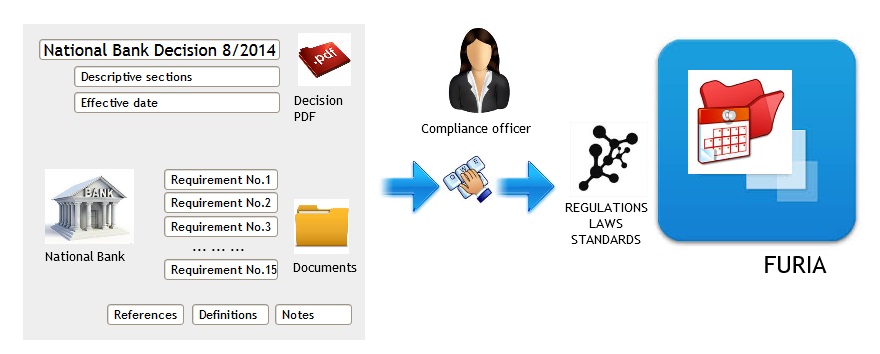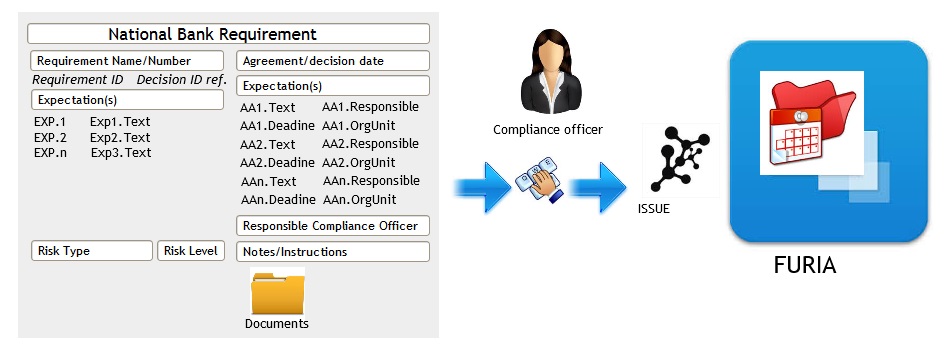When it comes to regulatory compliance, usual case is that you have Compliance Officers dealing with the new (and old) regulations that you must implement and strictly follow. However, one another usual case is that you cannot see too much of their direct output, since their activities are widespread across the company processes.
What we could frequently see in real practice in the banks, the insurances and mid-size/large companies, is that these hard-working fellows are dealing with constant urge with changes and lack of proper tools to follow all the issues and GAPs that are identified as incompliances.
Now, you can extend FURIA system to help them – but also to help you as a Manager – in dealing with complex analysis and real-time monitoring of compliance issues. Simply define new atom types for Compliance Reports and standard Hierarchy that usually applies to Audit Hierarchy.
Illustrative example of Report on National Bank decision with multiple actions:
Example of Compliance atom – National Bank Requirement:
How often you can see comprehensive reports that are digging all the issues related to regulatory compliance, specific laws or standards?
One important thing is linking and mixing heterogeneous data sources (Compliance, Audit, Internal Controls Reports, Standards) into meaningful reports that address problems related to particular law regulations, or internal/external standards that you are implemented.
Thanks to proper design of information linking withing the FURIA system, it is possible to easily gather references to particular regulations from different sources. Of course, there should be proper input of information, but that is the matter of the methodology when dealing with issue addressing and monitoring. In essence, some Audit Report or Compliance Report that target some law should refer to the particular law.
Basically, all the data from other FURIA areas is available for Compliance Reporting and close monitoring. Now you can see and compare the risks related to Compliance issues, measure and evaluate them, and finally prioritize them accordingly.
Simple as that!


